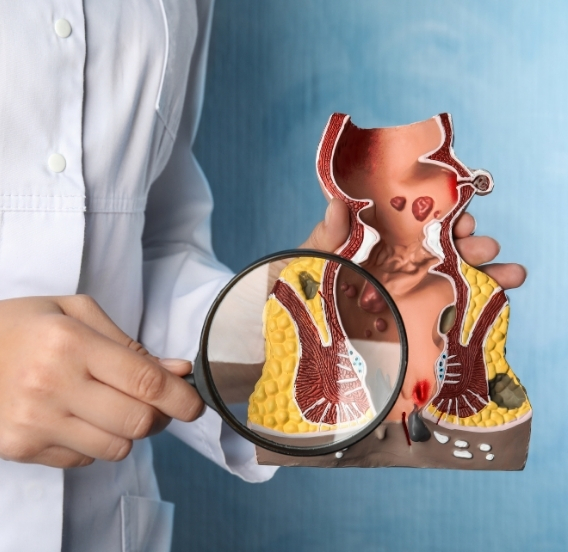What Are the Symptoms of Anal Abscess?
Anal abscess usually presents with rapidly developing symptoms. The most common complaints are:
-
Severe, throbbing pain and swelling around the anus
-
Increased pain when sitting, coughing, or during bowel movements
-
Purulent discharge (pus)
-
Red, tender lump
-
Pain during bowel movements and constipation
-
Skin irritation, itching, or rectal bleeding
-
Lower abdominal pain
-
General fatigue and fever
What Causes Anal Abscess?
Anal abscess usually forms due to infection caused by blockage of glands around the anus. Some common causes include:
-
Bacteria entering under the skin due to anal fistula (infection tract)
-
Trauma to the skin or anal area
-
Sexually transmitted infections
-
Prolonged diarrhea or constipation
-
Hidradenitis suppurativa (a chronic skin condition)
-
Weakened immune system (e.g., HIV/AIDS)
-
Inflammatory bowel diseases such as Crohn’s disease or ulcerative colitis
-
Poor hygiene of the anal area
-
Small cuts or wounds around the anus
How Is Anal Abscess Diagnosed?
Anal abscess is usually diagnosed by a physical examination performed by a specialist doctor. Superficial abscesses can be easily noticed visually, while deeper abscesses may require more detailed examination methods.
If necessary, the following tests may be performed:
-
Rectal examination
-
Proctosigmoidoscopy (viewing inside the anus with a lighted camera)
-
Imaging methods such as ultrasound, MRI, or CT scan
How Is Anal Abscess Treated?
The most effective treatment is drainage of the abscess by a specialist doctor. This procedure usually leads to rapid pain relief. Drainage is generally done through a small incision; in some cases, stitches or dressing may be needed.
After treatment, the following precautions are recommended:
-
Warm sitz baths several times a day (to reduce swelling and pain)
-
Use of antibiotics if necessary (especially in patients with weakened immunity)
-
Stool softeners or mild laxatives
-
Pain relievers
How Does Anal Abscess Heal?
Medical treatment is essential for the healing of an anal abscess. However, to alleviate symptoms and support recovery, the following should be observed:
These measures help both the healing of the current abscess and reduce the risk of new abscess formation.


